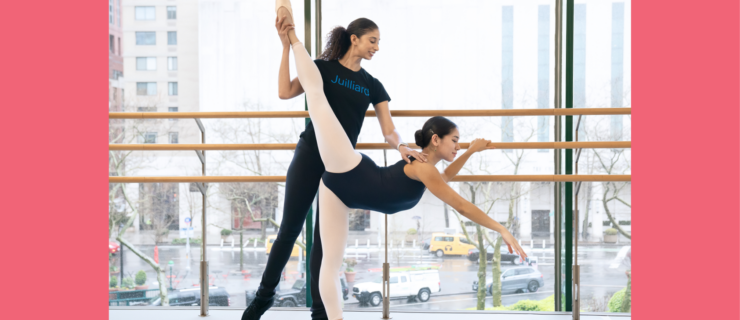Breaking Down Double Saut de Basque With Gen Horiuchi
Gen Horiuchi, Saint Louis Ballet’s executive and artistic director, achieved the type of storied career many dancers dream of: After growing up in a ballet family in Japan (both of his parents were professional dancers), he won the Prix de Lausanne and was offered a scholarship to train at the School of American Ballet. He soon joined New York City Ballet, where he became a principal dancer known for his explosive jumps.
Here, Horiuchi offers his expert advice for mastering a clean, dynamic double saut de basque—his favorite step!
Your Preparation Counts
“When you execute jumps, the most important thing is the step before the actual step,” Horiuchi says. “For double saut de basque, everyone thinks about the jump and turn, but what’s most crucial is how you get there.”
Try not to tombé underneath yourself in the preparation. “Otherwise you will have trouble,” says Horiuchi. Instead, prepare confidently by taking a big step out. “That sets up your placement so you can get into a strong position with your body,” he says, adding that it also allows you to get more height in your saut de basque.
1.5 Rotations Versus 2
“A lot of people think double saut de basque takes off facing the front of the room, but it is actually easier if you step to the side, brush and then jump,” says Horiuchi. This way, you’re already halfway around when you take off.
“Saut de basque is more about height than the spinning motion itself—if you get into the air, the turn will happen naturally,” Horiuchi says. “If you take off to the side, it’s not really even a double—it’s one and a half rotations. That takes the pressure off!”
Be Quick With Your Port de Bras
Using your head and arms correctly will create a dynamic and controlled saut de basque movement. Horiuchi says it’s important to take the arms into position with speed and precision.
“There is a tendency when you jump to hike the arms up, then they move with the turn,” he says. Rather than letting your arms swing with the turning motion, get them quickly into position. “Let the waist, lower back and shoulder take you around.”
Anticipate your spot, as well: “You should look where you aim.”
Not Just for Men
Double saut de basque is traditionally practiced as a men’s step and is used in many male variations. But Horiuchi believes it is a good exercise for everyone to try. “In company class, whenever I give men double saut de basque, there are female dancers who are so willing to jump too, and I give them tips.” He notes that women can apply the basics of saut de basque to other movements, like double step-overs (en dehors piqué turns).
Horiuchi’s Additional Tips for Success
- Always master saut de basque with a single turn before attempting a second rotation.
- Aim for height in your jump; don’t obsess over the turn.
- The preparation can be a tombé, a chassé or a “step-step” motion. A confident preparation makes a big difference!
- In your lower body, feel strength in your extended leg and a stretched foot. Make a high retiré position with the working leg.





